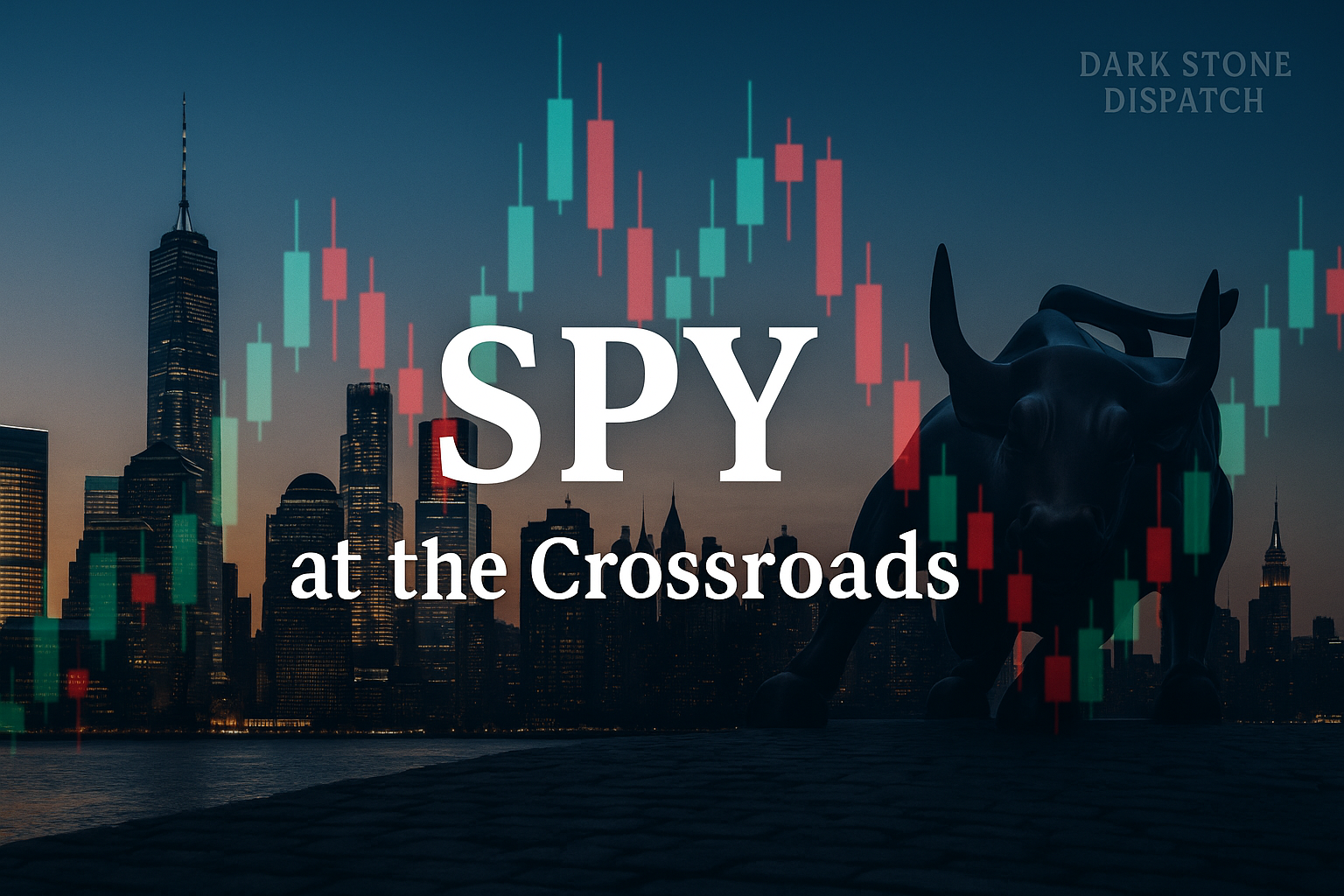Key Takeaways
After sprinting back toward $600, SPY now trades roughly 3 percent above its 200-day moving average near $579 and sits in a technical “no-man’s-land.” Momentum has cooled 14-day RSI has drifted from the overbought 70-plus peaks of late May to the low-60s, and the daily MACD histogram has slipped even while the signal line remains positive. A quick flush to the 200-day and perhaps the $575 handle many technicians flag, would be a textbook mean-reversion move rather than a breakdown.
Current Market Overview
The ETF closed at $597 on Friday, June 13, leaving it comfortably above its year-to-date low of $481.80 but shy of the $613.23 high set earlier this spring. Volume has begun expanding on down-days, hinting that weak hands are lightening positions ahead of a crowded macro calendar.
Why $575 Matters Technically
The 200-day moving average, now sitting just under $580, runs through the $575–$578 congestion zone left by May’s gap-and-go rally and an unfilled intraday gap from early January. Historically, SPY tests of the 200-day during cyclical uptrends have invited systematic buyers—pension funds, volatility-targeting strategies, and ETF allocators—to rebalance back into equities. If a downdraft reaches the line on ordinary volume, mean-reversion traders are likely to step in; if it arrives on a volume spike, the level can crack, opening air pockets toward $550 and $525.
Macro Trip-Wires Ahead
Tariff brinkmanship remains headline risk number one: the April wave erased roughly five trillion dollars in S&P 500 market value in just two sessions, reminding investors how violently sentiment can swing. Fed policy is the second wildcard; the June 17-18 meeting is expected to leave rates unchanged, but the dot-plot could show fewer cuts for 2025—any hawkish tilt would pressure valuations. On the data front, Retail Sales and Industrial Production, also released on June 17, are forecast flat to slightly negative; a miss could revive recession chatter. Finally, high-yield spreads have already stretched to a seventeen-month wide as investors demand more compensation for credit risk—one high-profile default could cascade through risk assets.
Historical Panic-and-Snapback Pattern
The market’s most recent stress test came in early April: the S&P 500 fell about 12 percent in four trading days on tariff threats, then ripped 9.5 percent higher the moment a 90-day pause was announced. That one-day surge was the biggest since 2008 and a vivid example of how quickly sentiment can reverse once forced sellers finish. Similar capitulation-and-rally sequences followed the December 2018 Fed pivot and the pandemic crash.
How Pros Are Framing the Trade
On X, several prominent technicians have called out the $575–$578 band as the first “real” support. TrendSpider’s @Jake__Wujastyke told followers to “get ready to buy hand-over-fist,” while perennial bull @MarketWizard87 says bears still need a decisive close below the 50-day and 10-week moving averages before they can claim control. Even strategist Ed Yardeni, usually valuation-focused, recently cited the mid-5,700s on the S&P 500 as a logical support zone. The chorus is not unanimous, but it is unusually loud for a single price level.
Strategy Considerations
Short-term traders should map out their game plan before volatility spikes: scale into partial positions if SPY probes $575 on ordinary volume, but be ready to defend or exit swiftly should a high-volume break appear.
Long-term investors can view a 200-day tag as a scheduled top-up; spreading buys over several tranches between $575 and $550 historically limits regret if sellers push further. In either case, keep an eye on the June 17 macro gauntlet—bad news could deliver a better entry, while a benign set of headlines may leave dip-hunters empty-handed.
Advisor’s Note
Markets rarely move in straight lines, and sentiment often resets at the 200-day. A swift slide to around $575 would feel painful in real time yet, in most cycles, has rewarded disciplined re-accumulation once fear is loudest. Decide now how much risk you are willing to add, pre-place limit orders, and define your next line-in-the-sand (for most, that is the January pivot around $550). Fear strikes hardest when plans are vague, so keep yours precise. This discussion is broad market commentary, not individualized investment advice; consult a registered adviser before taking action.
